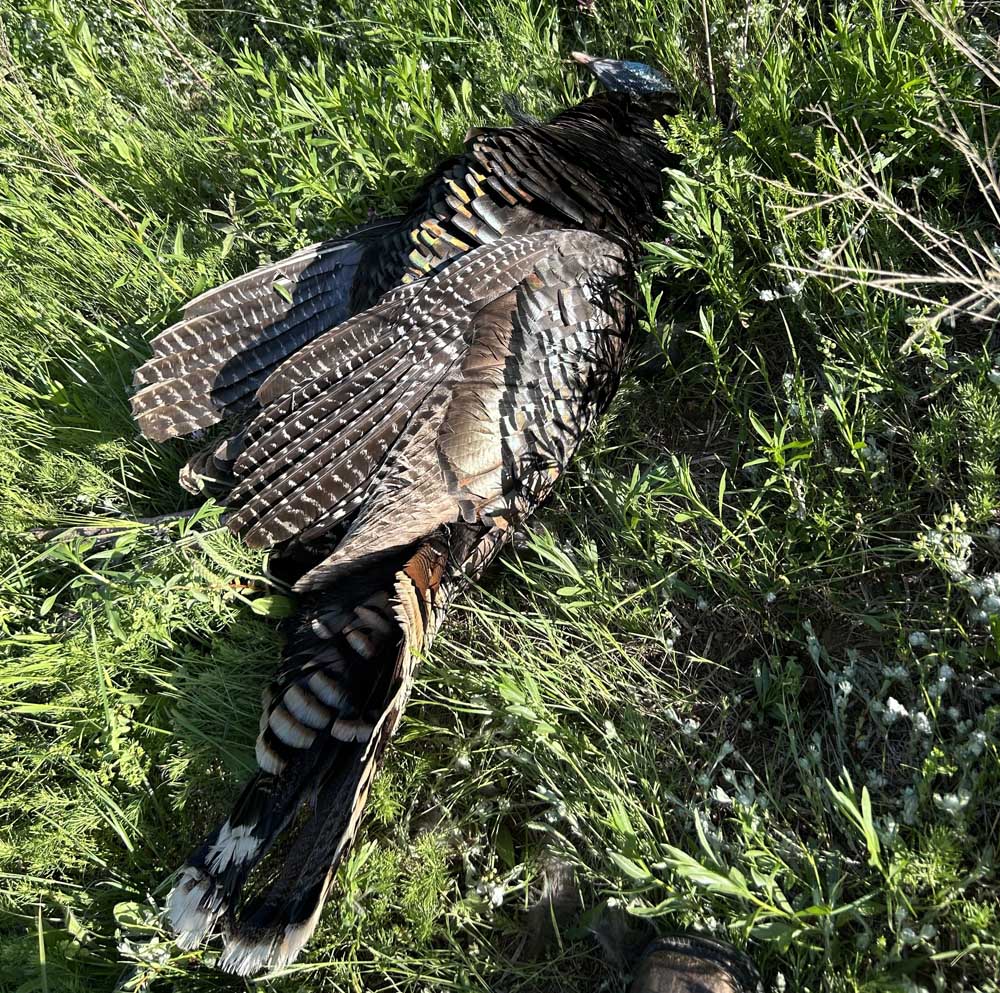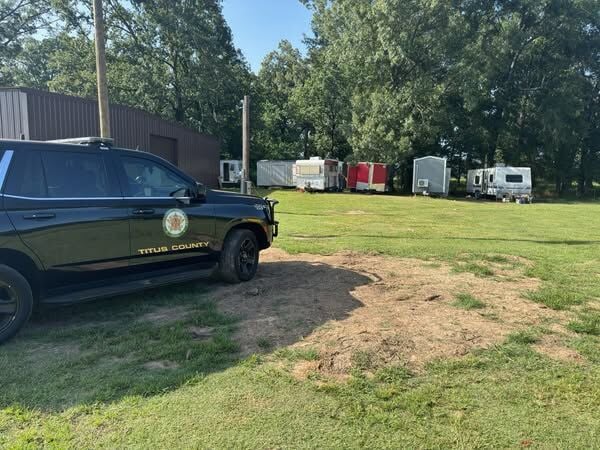Wing And A Prayer: Sometimes lucky beats good when it comes to hunting
Published 11:15 pm Friday, April 26, 2024

- Battling heat and high winds, it took some unusual actions to get a turkey into range, and just barely. (Steve Knight/Tyler Morning Telegraph)
CISCO — I have been spring turkey hunting in all kinds of conditions.
Some days it was warm, some were cold. I have hunted them in the snow and during a thunderstorm where the lightning bounced way too close. Once there was a tornado not much more than a mile north of where I was sitting.
Some of those hunts were successful. Some were not.
This hunt was not on the life-or-death list, but it was about as unique a spring hunt I have been on in 40-plus years of chasing turkeys.
I had never been on the 3,200-acre Eastland County ranch before. It was a lease my son, Thomas, got on before the last deer season. It was an interesting low-fence property, managed far differently than the manicured ranches seen around the state today. It was thick with mesquites and cedars, with a few old oaks surrounding numerous water holes scattered around.
Like a lot of ranches in that country it probably once had a lot of turkeys, but the numbers are down for some reason. They are not extinct on the ranch, and the fall/winter population is clearly higher than the spring breeding population.
Knowing there were only a few birds and not knowing their roost, we started the first morning with a plan of run-and-gun, moving around until we heard something. It did not work.
That evening we heard a distant gobble that at least gave us a starting point for the next day.
It was a relatively calm morning considering the forecast was calling for gusts up to 30 miles per hour throughout the day. It was still dark and overcast when we started the three-quarter mile walk to where we were going to start.
When I called there was an immediate response from a distant gobbler. It was promising, but we were soon surrounded by more bobwhite quail than turkeys, and with the way the quail population has been in Texas recently that is not saying a lot.
The bird seemed interested for a few minutes, and then went silent. Where he went we do not know. We walked the road calling until mid-morning, but with the wind building we never heard a word.
That afternoon we were back in camp, and Thomas was monitoring some spots equipped with cellular game cameras. I learned that cellular cameras are to hunting what forward facing sonar is to fishing when two birds showed up on camera mid-afternoon and we were able to cut out a lot of guesswork and head exactly where they were, or at least were last seen.
We parked a half-mile or more from where the birds had been and walked through the brush, one eye up for any sign of the turkeys and another eye down for rattlesnakes. Dodging low-lying thorny mesquite limbs and brush piles left from a wildfire years ago, we made it to where the birds had been 30 minutes early. Of course they were not there.
Quickly sitting down under an oak, we had not been there five minutes when one of the birds gobbled. I responded, and they gobbled back. Although the peak of the breeding activity seemed well-past, I thought these birds were hot and were about to come in on a rope.
They did not. But they also did not leave. For more than an hour we talked back and forth. They would approach, but they never came in. Even a nearby feeder going off would not bring them out of the woods where they were hiding.
And nothing would spook them off. Not changing calls, not making a weak attempt to gobble, not the strong wind or near 90-degree heat.
Finally, it was time for a Hail Mary. Blocked from their view I snuck out from our hiding spot and headed in the opposite direction hoping to make the birds think the hen was leaving. It worked a little as the two moved closer and continued to gobble, but would not clear the cover to give Thomas a shot.
I continued to put distance between us, calling softer into the wind. At some point I heard Thomas call, unable to see where he was sitting, I did not know he made a move toward the birds.
That usually does not work because with their eyesight they see us before we see them, but he got away with it enough that he saw the birds with a herd of cows between him and them.
I do not know what happened next, but he later said one of the birds started to leave, but he could clearly see the red head of the other. After having worked the birds now for almost two hours he decided it was time to take a shot.
When I walked up Thomas was wondering around. Not knowing he had moved, my first thought was he had been chasing a wounded bird. The smile on his face told me otherwise.
“You are not going to believe this,” he said as he showed me where he had moved, and a tree limb he axed with his shot. Then he pointed to the bird. It was nothing but a greying lump in the green grass off in the distance.
It was not exactly Billy Dixon’s famous shot at the second battle of Adobe Walls in 1874, but it had to be somewhere between 50 and 75 yards, and probably closer to the latter.
There was absolutely no sign of a wound, meaning it had to be a case of that famed magic pellet.
Nope, I have never seen anything like it.
— Contact Knight at outdoor@tylerpaper.com






